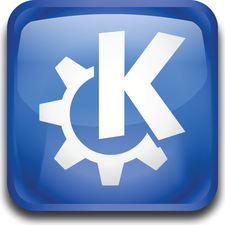The "Kool" desktop is almost as old as Justin Bieber – and far more stable.
Desktop Through the Decades

We look at the ups and downs of the past two decades of the "Kool" desktop.
Those of us who started using Linux back in the late 1990s remember all too well that it wasn't a pretty operating system on the desktop. Sure, we had a bunch of tools like Netscape and Gimp at our disposal, and a variety of window managers, but everything felt like a bit of a kludge. Nothing was really well integrated, every app had its own look and feel, and while we still preferred it to the other operating systems of the time, we never really felt comfortable in it.
That's not to say it was all bad. FVWM users, for example, were rocking an insanely configurable window manager that wiped the floor with Windows and Mac OS. Users who did most of their work in text terminals were having an awesome time. The GNU/Linux combination with XFree86 on top was a workable desktop operating system for geeks with time to invest, but for newcomers it all looked rather clumsily bolted together.
Fortunately, one group of hackers had the foresight to do something about this. Instead of having a window manager developed by one team, and a file manager by another, and a text editor by yet another, all using different toolkits and config files and themes, wouldn't it be great if all these bits and pieces were worked on in unison? Wouldn't it make more sense for a desktop environment and all its common utilities to be developed by a single project, to encourage consistency and code reuse?
[...]
Buy this article as PDF
(incl. VAT)
Buy Linux Magazine
Subscribe to our Linux Newsletters
Find Linux and Open Source Jobs
Subscribe to our ADMIN Newsletters
Support Our Work
Linux Magazine content is made possible with support from readers like you. Please consider contributing when you’ve found an article to be beneficial.

News
-
SUSE Dives into the Agentic AI Pool
SUSE becomes the first open source company to adopt agentic AI with SUSE Enterprise Linux 16.
-
Linux Now Runs Most Windows Games
The latest data shows that nearly 90 percent of Windows games can be played on Linux.
-
Fedora 43 Has Finally Landed
The Fedora Linux developers have announced their latest release, Fedora 43.
-
KDE Unleashes Plasma 6.5
The Plasma 6.5 desktop environment is now available with new features, improvements, and the usual bug fixes.
-
Xubuntu Site Possibly Hacked
It appears that the Xubuntu site was hacked and briefly served up a malicious ZIP file from its download page.
-
LMDE 7 Now Available
Linux Mint Debian Edition, version 7, has been officially released and is based on upstream Debian.
-
Linux Kernel 6.16 Reaches EOL
Linux kernel 6.16 has reached its end of life, which means you'll need to upgrade to the next stable release, Linux kernel 6.17.
-
Amazon Ditches Android for a Linux-Based OS
Amazon has migrated from Android to the Linux-based Vega OS for its Fire TV.
-
Cairo Dock 3.6 Now Available for More Compositors
If you're a fan of third-party desktop docks, then the latest release of Cairo Dock with Wayland support is for you.
-
System76 Unleashes Pop!_OS 24.04 Beta
System76's first beta of Pop!_OS 24.04 is an impressive feat.

